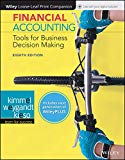
(a)
Accounts receivable turnover
Accounts receivable turnover is a liquidity measure of accounts receivable in times, which is calculated by dividing the net credit sales by the average amount of net accounts receivables. In other words, it indicates the number of times the average amount of net accounts receivables collected during a particular period.
Average collection period:
Average collection period indicates the number of days taken by a business, to collect its outstanding amount of accounts receivable on an average.
To calculate: The accounts receivable turnover and average collection period of Company S for the year 2017.
(b)
To find out: whether accounts receivable is a material component of Company S’s current assets in 2017.
(c)
To discuss: The expected change in answer (a), if Company S sells seasonal products.
(d)
To evaluate: The credit risk of Company S’s concentrated receivables.
(e)
To comment: On the informational value of Company S’s Note 19.
Want to see the full answer?
Check out a sample textbook solution
Chapter 8 Solutions
Financial Accounting: Tools for Business Decision Making, 8e WileyPLUS (next generation) + Loose-leaf
- accountingarrow_forwardHello tutor please help me accounting questionarrow_forwardOn October 1, 2023, Galaxy Tours Ltd. borrowed $240,000 by signing a 1-year note with an 8% annual interest rate. The interest is payable at maturity on September 30, 2024. What amount of interest payable should Galaxy Tours report on December 31, 2023? a) $12,800 b) $9,600 c) $6,400 d) $4,800arrow_forward
- Cottonwood Company reports the following operating results for the month of August: sales $347,900 (units 4,970); variable costs $216,000; and fixed costs $97,200. Management is considering the following independent courses of action to increase net income. 1. Increase selling price by 11% with no change in total variable costs or units sold. 2. Reduce variable costs to 51% of sales. Compute the net income to be earned under each alternative.arrow_forwardMetro Inc. sells a product with the following data: • Selling price per unit: $50 • • Contribution margin ratio: 20% Fixed costs: $180,000 Using the contribution margin ratio approach, determine the sales in dollars and in units needed to achieve a target profit of $60,000.arrow_forwardGeneral accountingarrow_forward
 Financial Accounting: The Impact on Decision Make...AccountingISBN:9781305654174Author:Gary A. Porter, Curtis L. NortonPublisher:Cengage LearningPrinciples of Accounting Volume 1AccountingISBN:9781947172685Author:OpenStaxPublisher:OpenStax CollegeCentury 21 Accounting Multicolumn JournalAccountingISBN:9781337679503Author:GilbertsonPublisher:Cengage
Financial Accounting: The Impact on Decision Make...AccountingISBN:9781305654174Author:Gary A. Porter, Curtis L. NortonPublisher:Cengage LearningPrinciples of Accounting Volume 1AccountingISBN:9781947172685Author:OpenStaxPublisher:OpenStax CollegeCentury 21 Accounting Multicolumn JournalAccountingISBN:9781337679503Author:GilbertsonPublisher:Cengage College Accounting, Chapters 1-27AccountingISBN:9781337794756Author:HEINTZ, James A.Publisher:Cengage Learning,
College Accounting, Chapters 1-27AccountingISBN:9781337794756Author:HEINTZ, James A.Publisher:Cengage Learning, Cornerstones of Financial AccountingAccountingISBN:9781337690881Author:Jay Rich, Jeff JonesPublisher:Cengage Learning
Cornerstones of Financial AccountingAccountingISBN:9781337690881Author:Jay Rich, Jeff JonesPublisher:Cengage Learning





